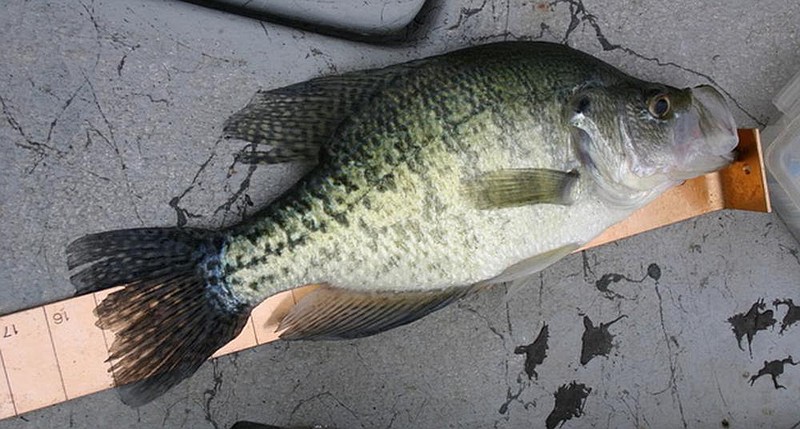A perfect fishing day in October is any day you can go.
Right now the air temperature is in the low 80s by noon. The water temperature at lakes Ouachita and DeGray are in the 80s, and in the high 70s at Lake Dardanelle. Skies are mostly clear, and winds are light. Game fish are heading into the backwaters just as they do in the springtime, and you can catch them with similar techniques as in spring.
Bass
As days get shorter and the water gets cooler, bass are feeding aggressively to put on weight for the winter. Surprisingly, you can catch them all day on topwater lures and jerkbaits in main tributaries and against windblown banks where shad concentrate.
One of my favorite places to fish for bass in the fall is at Lake Nimrod. Covering about 3,550 acres, Nimrod is small enough to carve into small bites and eliminate the intimidation factor that accompanies fishing at much bigger reservoirs such as Lake Ouachita.
I have enjoyed some superb days of fishing, especially in the late afternoon and evening, along the south bank against a north wind using jerkbaits and medium-diving crankbaits that carom off rocks and stir up silt. If a mild wind kicks up a slight chop, you can catch bass almost to the bank with topwater lures such as a Pop "R," Whopper Plopper or even an old-fashioned buzzbait.
You can often catch bigger bass lurking a little farther offshore by throwing a big plastic worm on a Carolina rig or a Texas rig.
Some of the best fishing occurs on rainy days, when a combination of low light and rippled surface water brings bass shallow. One such trip occurred on Lake Ouachita with George Cochran of Hot Springs, two-time Bassmaster Classic champion and 2005 Forrest Wood Cup champion. We profited from those conditions in the early fall to enjoy a phenomenal day catching largemouth and Kentucky bass from coves in major tributaries. We used Lucky Strike Gun Fish jerkbaits. They were also very productive that day around boat docks.
On rivers such as the Arkansas and lower Ouachita, you can catch largemouth bass and big Kentucky bass throwing squarebill crankbaits off wing dams and revetments, and by throwing big, bright spinnerbaits at isolated main-river cover.
Crappie
Crappie fishing is very good in the fall, but you'll have to temper your expectations. You probably won't catch as many crappie in a typical October outing as you will in March and April, but you will catch enough to make a trip worthwhile.
The style of fishing is also very different and much more technical. In the spring, crappie concentrate in shallow cover near the bank. In the fall, they usually concentrate on deep offshore structure, like brushpiles with their tops about 20 feet below the surface.
Bill Eldridge of Benton loves fishing for crappie in the fall because most other anglers are deer hunting, leaving him alone on the water. Like most veteran crappie anglers, Eldridge has a milk run of brushpiles that are typically productive in the fall. He anchors about 10 yards downwind of a brushpile with an anchor on the bow and an anchor on the stern. These hold the boat motionless. He casts a light jig with a soft plastic grub upwind past the brushpile and counts until the lure sinks to the proper depth. Then he slowly reels. The jig should nick the top of the brushpile. Crappie, which look up for prey, will often strike.
Again, numbers are fewer than in the spring, but the average size fish is pretty large.
Stripers
In the fall, big lakes usually "turn over" as water circulates vertically, causing striped bass to rise from the depths and disperse across the lake. After the water stabilizes, stripers follow shad to the upper ends of reservoirs and into major tributaries, just as they do in the springtime. You will often find them in backs of coves, on flats and off the ends of long, main-lake points that drop to the main river channel.
Trolling stickbaits is always my favorite way to catch stripers. This method allows you to cover a lot of water at a variety of angles. You can troll parallel to the channels, but you can also criss-cross channels.
If stripers don't hit fast baits, you can often catch them by bouncing a big white, bucktail jig off the bottom or by casting big spoons. Stripers often follow a jig or spoon to the bottom and then hit it when you begin retrieving. This is also a great way to catch big white bass/striped bass hybrids at lakes Beaver, Bull Shoals, DeGray and Hamilton.
As in the spring, stripers are most active at daybreak and at dusk. In dark, cloudy weather they might be aggressive in spurts all day. Drizzly days are best.
Stripers don't have to tear up the surface to hit topwater lures. In fact, most of the stripers I've caught on topwaters occurred without any evidence of surface activity.
Keep your drag light enough to keep a big striper or hybrid from breaking your line and enjoy the fight.
